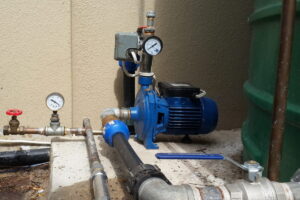Water treatment is the process of removing contaminants from water to make it safe for drinking, irrigation, or industrial use. Water purification is a more specific type of water treatment that removes all harmful contaminants, making the water sterile. Sterilization is the process of killing all microorganisms, including bacteria, viruses, and protozoa.
The Water Treatment/Purification/Sterilization Process
The water treatment/purification/sterilization process typically consists of the following steps:
- Draw water samples: Water samples are drawn from the source water (e.g., groundwater, surface water, wastewater) and sent to an accredited laboratory for quality testing.
- Quality testing: The water samples are tested for a variety of contaminants, including physical, chemical, and biological contaminants. The results of the quality testing are used to determine the appropriate treatment process.
- Comprehensive analysis on composition: The results of the quality testing are used to conduct a comprehensive analysis of the water composition. This analysis includes identifying the types and concentrations of contaminants present in the water.
- Design & specify the treatment process: The water treatment/purification/sterilization process is designed based on the results of the comprehensive analysis of the water composition. The design process takes into account a number of factors, including the type and concentration of contaminants, the desired water quality, and the budget.
- Factory fabricate, build and assemble the system: The water treatment/purification/sterilization system is fabricated and assembled in a factory. This ensures that the system is built to high quality standards and is ready to be installed and commissioned on-site.
- Install and commission the system: The water treatment/purification/sterilization system is installed on-site and commissioned by qualified personnel. The commissioning process involves testing the system to ensure that it is operating properly and meeting the desired water quality standards.
Skid-Mounted, Packaged, Containerized, or On-Site Application
Water treatment/purification/sterilization systems can be skid-mounted, packaged, containerized, or site-specific. Skid-mounted and packaged systems are typically smaller and more portable than containerized and site-specific systems. Skid-mounted systems are typically mounted on a metal frame and can be easily moved around with a forklift. Packaged systems are typically enclosed in a metal cabinet and can be placed on a skid or on the ground. Containerized systems are typically enclosed in a shipping container and can be easily transported to and from different locations. Site-specific systems are designed and built to meet the specific needs of the application site.
Conclusion
Water treatment/purification/sterilization is an essential process for ensuring the safety and quality of our water supply. The water treatment/purification/sterilization process can be customized to meet the specific needs of any application.
Benefits of Water Treatment/Purification/Sterilization
- Improved water quality
- Reduced risk of waterborne diseases
- Increased life expectancy of water distribution systems
- Improved taste and odor of water
- Reduced corrosion of pipes and equipment
- Increased crop yields
- Reduced environmental impact
Applications of Water Treatment/Purification/Sterilization
- Drinking water
- Wastewater treatment
- Industrial water treatment
- Irrigation
- Food and beverage processing
- Pharmaceutical manufacturing
- Healthcare
- Electronics manufacturing
- Power generation
If you have any questions or need assistance with water treatment/purification/sterilization, please contact a qualified water treatment professional.




